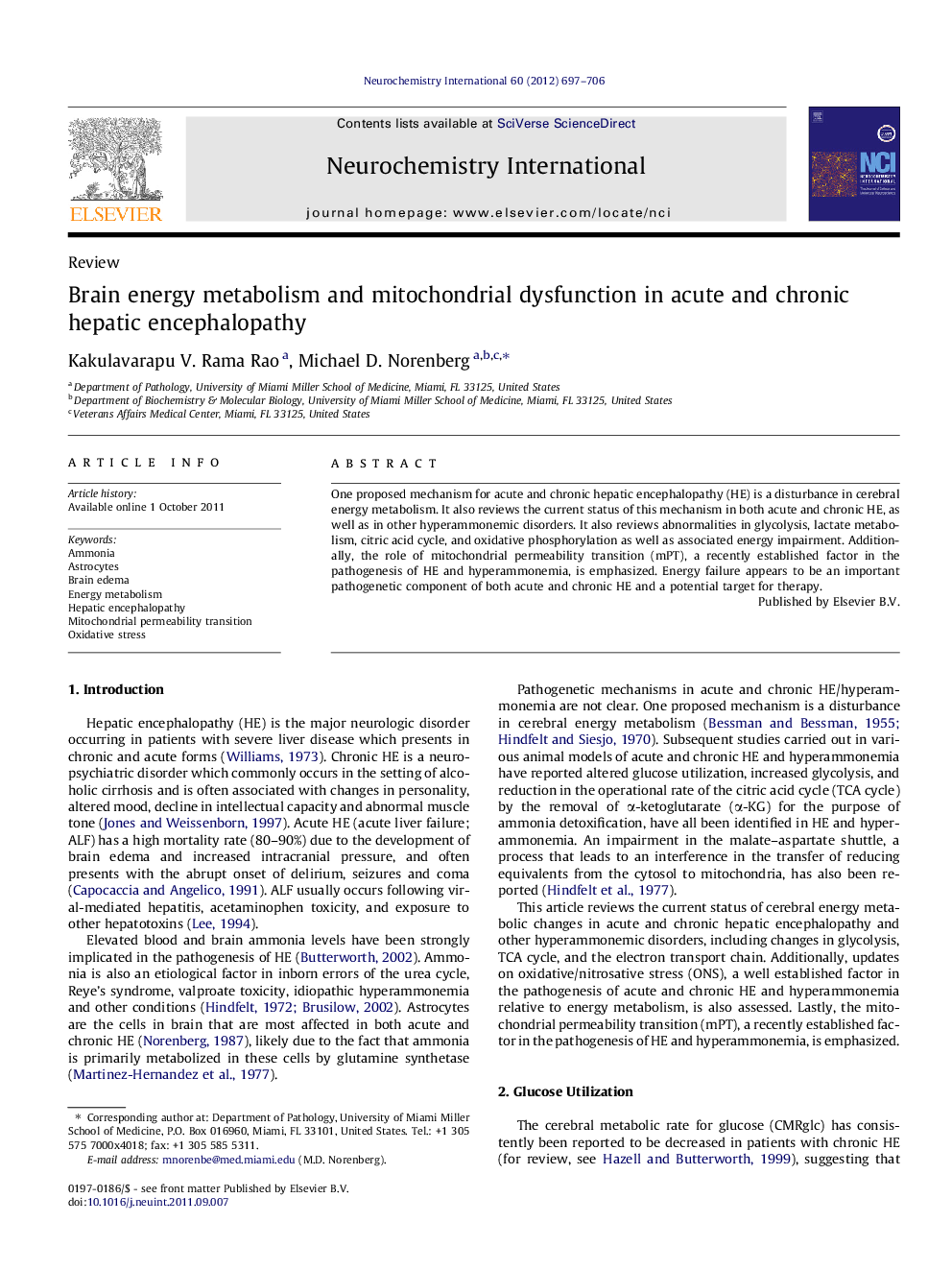| Article ID | Journal | Published Year | Pages | File Type |
|---|---|---|---|---|
| 2200906 | Neurochemistry International | 2012 | 10 Pages |
One proposed mechanism for acute and chronic hepatic encephalopathy (HE) is a disturbance in cerebral energy metabolism. It also reviews the current status of this mechanism in both acute and chronic HE, as well as in other hyperammonemic disorders. It also reviews abnormalities in glycolysis, lactate metabolism, citric acid cycle, and oxidative phosphorylation as well as associated energy impairment. Additionally, the role of mitochondrial permeability transition (mPT), a recently established factor in the pathogenesis of HE and hyperammonemia, is emphasized. Energy failure appears to be an important pathogenetic component of both acute and chronic HE and a potential target for therapy.
► Changes in brain energy metabolism in HE and hyperammonemia have been highlighted in this review. ► The role of mitochondrial permeability transition in the pathogenesis of HE has been emphasized. ► Impact of altered bioenergetics on brain edema in acute liver failure has also been presented.
